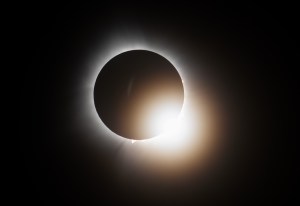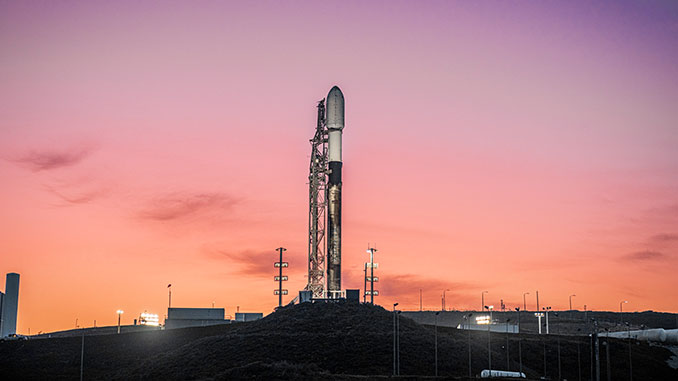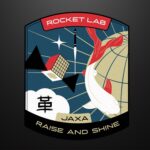Now Reading: Global Race to Launch Satellites Heats Up in May
-
01
Global Race to Launch Satellites Heats Up in May
Global Race to Launch Satellites Heats Up in May


As the world of space exploration accelerates, May is set to be a thrilling month for orbital launches, featuring ambitious missions from five nations across three continents. The excitement is palpable as we see new players entering the stage alongside established giants.
Australia’s Gilmour Space: Setting New Horizons
Australia is making waves with its inaugural orbital launch by Gilmour Space. The Eris rocket, a hybrid-powered marvel, is ready for its debut from the Bowen Orbital Spaceport in Queensland. This launch is not just a step for Gilmour Space, but a significant milestone for Australia, marking its entry into the exclusive group of countries capable of launching satellites into orbit with indigenous technology.
The Eris rocket features three stages and is designed to carry payloads of up to 305 kg to a 500 km equatorial orbit. Its first mission, TestFlight1, is set to carry a test payload that could potentially pave the way for future small satellite launches. The stakes are high, and the success of this mission will not only validate Gilmour’s technology but also inspire a new generation of Australian engineers and dreamers.
Rocket Lab: The Sea God Sees
Meanwhile, across the Tasman Sea, Rocket Lab’s Electron rocket is preparing for its mission called “The Sea God Sees,” aimed at deploying the QPS-SAR-10 satellite for Japan’s iQPS. The launch is scheduled from Mahia Peninsula, showcasing Rocket Lab’s expertise in delivering small satellite payloads into orbit.
This satellite, capable of capturing images through cloud cover and darkness, is pivotal for Earth observation, and the mission marks the second in an ambitious series of launches to build a comprehensive satellite constellation. Such capabilities elevate our understanding of Earth and enable advancements in environmental monitoring, disaster management, and more.
India’s ISRO: Pioneering Earth Observation
The Indian Space Research Organisation (ISRO) is also in the spotlight with its EOS-09 mission, using the PSLV-XL rocket. Scheduled to launch from the Satish Dhawan Space Centre, this mission aims to deliver the RISAT-1B satellite into orbit, enhancing India’s Earth observation capacities.
With a mass of 1,710 kg, the EOS-09 satellite will provide critical data for agricultural monitoring, forestry, and disaster management. This mission illustrates ISRO’s commitment to using space technology for the benefit of humankind, continuing its legacy of innovative and value for your money space solutions.
China’s Chang Zheng and ZhuQue Rockets: A Dual Launch Gambit
China is set to carry out a pair of launches from the Jiuquan Satellite Launch Center. The Chang Zheng 2D rocket will deploy a constellation of 12 satellites developed by ADASPACE, demonstrating advancements in inter-satellite communication technology and AI-assisted in-orbit processing. The launch of the ZhuQue-2E, using liquid methane as a propellant, emphasizes China’s investment in sustainable launch solutions.
These missions are vital for China’s strategic goals in satellite communications and Earth observation, reflecting a broader commitment to maintaining leadership in space capabilities.
SpaceX: A Continuous Rhythm of Innovation
SpaceX continues to dominate the launch scene with multiple Falcon 9 missions throughout May. As it rolls out batches of Starlink satellites, SpaceX is not only improving global internet coverage but also refining its launch processes and technology. With the Falcon 9 now having achieved 450 successful landings, the operational efficiency is remarkable and sets the stage for future endeavors, including crewed missions and interplanetary launches.
With future missions scheduled to break records and expand the Starlink constellation, SpaceX remains at the forefront of the modern space race, pushing the boundaries of what is possible in space logistics.
As we watch these international efforts unfold, it’s clear that this month of launches symbolizes a burgeoning era of collaboration and competition in space exploration. Each launch presents an opportunity not just for technological advancement, but also for a deeper understanding of our planet and beyond. The race to the stars is not just about rockets—it’s about the dreams they carry with them.
Stay Informed With the Latest & Most Important News
-
 012024 in Review: Highlights from NASA in Silicon Valley
012024 in Review: Highlights from NASA in Silicon Valley -
 02Panasonic Leica Summilux DG 15mm f/1.7 ASPH review
02Panasonic Leica Summilux DG 15mm f/1.7 ASPH review -
 03How New NASA, India Earth Satellite NISAR Will See Earth
03How New NASA, India Earth Satellite NISAR Will See Earth -
 04And Thus Begins A New Year For Life On Earth
04And Thus Begins A New Year For Life On Earth -
 05Astronomy Activation Ambassadors: A New Era
05Astronomy Activation Ambassadors: A New Era -
06SpaceX launch surge helps set new global launch record in 2024
-
 07From Polymerization-Enabled Folding and Assembly to Chemical Evolution: Key Processes for Emergence of Functional Polymers in the Origin of Life
07From Polymerization-Enabled Folding and Assembly to Chemical Evolution: Key Processes for Emergence of Functional Polymers in the Origin of Life




















